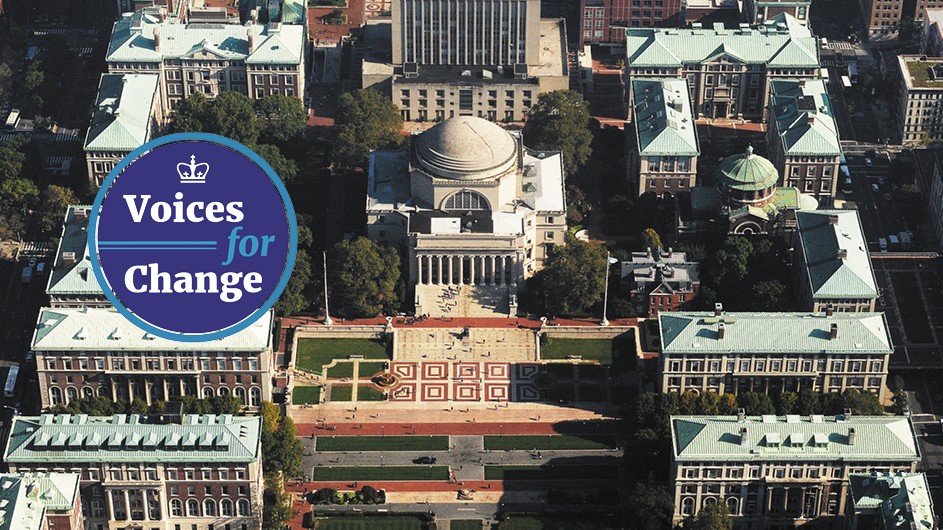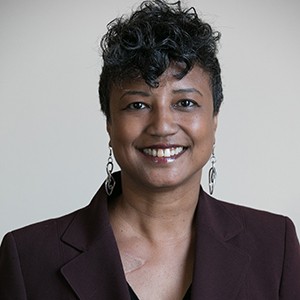Voices for Change

Celina Chatman Nelson, Associate Dean, Academic Diversity and Inclusion/Professional Development, Graduate School of Arts and Sciences
The Potential Impact on the World Beyond Columbia
I was pleased that Columbia acted swiftly as an institution, both in responding to the atrocious acts of racism that marked the spring and summer of 2020—namely the murders of Black Americans George Floyd, Breonna Taylor, and Tony McDade by uniformed police officers, and Ahmaud Arbery by a vigilante mob that included a retired police officer—and in acknowledging its obligation to address racism in our own institution’s history and current practices.

I was also pleased to see President Bollinger and the antiracism task force call specific attention to anti-Black racism, given the persisting disparities that Black Americans face in just about every domain of human experience: education, occupation, economic status, physical and mental health, personal and social well-being, and even mortality.
Despite these important considerations, I have been wary about whether this moment represents a knee-jerk reaction grounded in the collective trauma resulting from the pandemic. Already there are reports of waning interest and support for addressing anti-Black racism specifically, just over a year since the COVID-19 pandemic ensued. The racism that plagues our nation and our institution is not new, but our current state of racial reckoning is. I hope that we at Columbia will sustain our “long-range vision for anti-racist work, including work challenging anti-Black racism in particular” beyond this moment and beyond this task force.
The Graduate School of Arts and Sciences prepares a significant number of scholars who will go on to be faculty at our nation’s institutions and perhaps throughout the world. These scholars will produce new knowledge and train subsequent generations in the tools and ways of thinking of their respective fields and disciplines.
Those who choose careers outside of the academy will bring to bear the knowledge they have consumed and the critical inquiry skills they have honed in their graduate studies on the world’s most pressing issues. For Black, Latinx, and Indigenous students in our programs, racist attitudes, behaviors, practices, policies, structures, and systems can erode their academic interests and commitments and seriously impede their capacity to thrive while here at Columbia and thus their potential impact in the world. Working together to dismantle racism at Columbia and within its constituent academic departments will not only attenuate these sources of friction for scholars from racialized backgrounds and enable their fuller development, but will also ensure that all of our graduates are less likely to contribute to the persisting reproduction of racial inequities and ultimately end this cycle.
Add Your Voice
Currently, however, students who identify as domestic Black or African American, Hispanic or Latino/a, American Indian or Alaska Native, or Native Hawaiian or Other Pacific Islander collectively make up less than 7% of the total GSAS student population. Becoming a truly anti-racist Columbia would require that we identify and correct for the role that structural, systemic, and procedural racism plays in graduate admissions as well as successful matriculation through our programs. What would it mean to remove the veil of whiteness in imagining a new Columbia, and what would be the outcome?
Address Race-based Inequalities Intentionally, Specifically, Directly
Anti-racism should not be subsumed under diversity, inclusion, and inclusive climate considerations. Race-based inequalities and inequities are almost always a result of racist policies, practices, structures, and systems, and should be addressed intentionally, specifically, and directly. Too often, attempts to be more broadly inclusive cause us to lose sight of those groups who have been most consistently and severely excluded throughout our nation’s history.
Even in recent years, for example, Columbia’s task force for race and ethnicity was changed to one that focuses on inclusion and belonging more broadly. Black and Brown students (and faculty and staff) continue, therefore, to feel disenfranchised and under-valued as members of this community. Much more can be done to create a diverse but unified Columbia.
As the mid-year progress report on anti-racism efforts at Columbia demonstrates, our collective impact is significant and substantial. What is less evident, however, is what distinguishes Columbia as an antiracist institution as a whole and not as a sum of its parts.